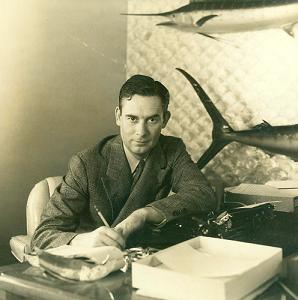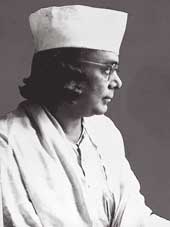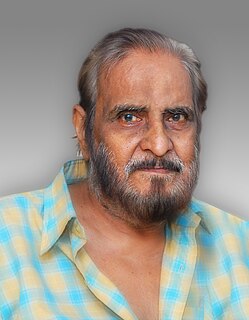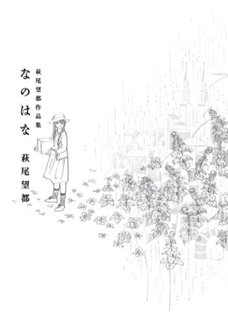
Do Androids Dream of Electric Sheep? is a dystopian science fiction novel by American writer Philip K. Dick, first published in 1968. The novel is set in a post-apocalyptic San Francisco, where Earth's life has been greatly damaged by a nuclear global war, leaving most animal species endangered or extinct. The main plot follows Rick Deckard, a bounty hunter who is tasked with "retiring" six escaped Nexus-6 model androids, while a secondary plot follows John Isidore, a man of sub-par IQ who aids the fugitive androids.

Apocalyptic and post-apocalyptic fiction is a subgenre of science fiction, science fantasy, dystopia or horror in which the Earth's civilization is collapsing or has collapsed. The apocalypse event may be climatic, such as runaway climate change; astronomical, such as an impact event; destructive, such as nuclear holocaust or resource depletion; medical, such as a pandemic, whether natural or human-caused; end time, such as the Last Judgment, Second Coming or Ragnarök; or more imaginative, such as a zombie apocalypse, cybernetic revolt, technological singularity, dysgenics or alien invasion.

Fail Safe is a 1964 Cold War thriller film directed by Sidney Lumet, based on the 1962 novel of the same name by Eugene Burdick and Harvey Wheeler. It portrays a fictional account of a nuclear crisis. The film features performances by actors Henry Fonda, Dan O'Herlihy, Walter Matthau, Frank Overton, Larry Hagman, Fritz Weaver, Dana Elcar, Dom DeLuise and Sorrell Booke.

Eyvind Johnson was a Swedish novelist and short story writer. Regarded as the most groundbreaking novelist in modern Swedish literature he became a member of the Swedish Academy in 1957 and shared the Nobel Prize in Literature with Harry Martinson in 1974 with the citation: for a narrative art, far-seeing in lands and ages, in the service of freedom.

The Turner Diaries is a 1978 novel by William Luther Pierce, published under the pseudonym Andrew Macdonald. It depicts a violent revolution in the United States which leads to the overthrow of the federal government, a nuclear war, and, ultimately, a race war which leads to the systematic extermination of non-whites. All groups opposed by the novel's protagonist, Earl Turner—including Jews, non-whites, "liberal actors", and politicians—are exterminated.

The Atomic Age, also known as the Atomic Era, is the period of history following the detonation of the first nuclear weapon, The Gadget at the Trinity test in New Mexico, on July 16, 1945, during World War II. Although nuclear chain reactions had been hypothesized in 1933 and the first artificial self-sustaining nuclear chain reaction had taken place in December 1942, the Trinity test and the ensuing bombings of Hiroshima and Nagasaki that ended World War II represented the first large-scale use of nuclear technology and ushered in profound changes in sociopolitical thinking and the course of technological development.

Kenzaburō Ōe is a Japanese writer and a major figure in contemporary Japanese literature. His novels, short stories and essays, strongly influenced by French and American literature and literary theory, deal with political, social and philosophical issues, including nuclear weapons, nuclear power, social non-conformism, and existentialism. Ōe was awarded the Nobel Prize in Literature in 1994 for creating "an imagined world, where life and myth condense to form a disconcerting picture of the human predicament today".

Philip Gordon Wylie was an American author of works ranging from pulp science fiction, mysteries, social diatribes and satire to ecology and the threat of nuclear holocaust.

Aviation Week & Space Technology, often abbreviated Aviation Week or AW&ST, is the flagship magazine of the Aviation Week Network. The weekly magazine is available in print and online, reporting on the aerospace, defense and aviation industries, with a core focus on aerospace technology. It has a reputation for its contacts inside the United States military and industry organizations.
Eric Drooker is an American painter, graphic novelist, and frequent cover artist for The New Yorker. He conceived and designed the animation for the film Howl (2010).

Z for Zachariah is a post-apocalyptic science-fiction novel by Robert C. O'Brien that was published posthumously in 1974. The name Robert C. O'Brien was the pen name used by Robert Leslie Conly. After the author's death in 1973, his wife Sally M. Conly and daughter Jane Leslie Conly completed the book guided by his notes. Set in the United States, the story is in the form of a diary written from the first-person perspective of sixteen-year-old Ann Burden, who has survived a nuclear war and nerve gas through living in a small valley with a self-contained weather system.

The Hammer of God is a science fiction novel by Arthur C. Clarke originally published in 1993. Set in the year 2109, it deals with the discovery of an asteroid to be on course to collide with Earth and depicts the mission for deflecting the asteroid using fusion thermal rockets.

Bengali science fiction is a part of Bengali literature containing science fiction elements. It is called ‘Kalpavigyan’ (কল্পবিজ্ঞান) or stories of imaginative science, in Bengali literature. The term was first coined by Adrish Bardhan during his editorship years.

Fear and Loathing in Las Vegas: A Savage Journey to the Heart of the American Dream is a 1971 novel by Hunter S. Thompson, illustrated by Ralph Steadman. The book is a roman à clef, rooted in autobiographical incidents. The story follows its protagonist, Raoul Duke, and his attorney, Dr. Gonzo, as they descend on Las Vegas to chase the American Dream through a drug-induced haze, all the while ruminating on the failure of the 1960s countercultural movement. The work is Thompson's most famous book, and is noted for its lurid descriptions of illegal drug use and its early retrospective on the culture of the 1960s. Thompson's highly subjective blend of fact and fiction, which it popularized, has become known as gonzo journalism. The novel first appeared as a two-part series in Rolling Stone magazine in 1971, and was published as a book in 1972. It was later adapted into a film of the same title in 1998 by Terry Gilliam, starring Johnny Depp and Benicio del Toro who portrayed Raoul Duke and Dr. Gonzo, respectively.

N. N. Pisharody was a director in the Malayalam Film industry. He was born into a feudal family, known as "Kallil" in Methala, near Perumbavoor in Kerala.
Romanian science fiction began in the 19th century and gained popularity in Romania during the second half of the 20th century. While a few Romanian science fiction writers were translated into English, none proved popular abroad.

This Immortal, serialized as ...And Call Me Conrad, is a science fiction novel by American author Roger Zelazny. In its original publication, it was abridged by the editor and published in two parts in The Magazine of Fantasy and Science Fiction in October and November 1965. It tied with Frank Herbert's Dune for the 1966 Hugo Award for Best Novel.
Shueisha Inc. is a Japanese company headquartered in Chiyoda, Tokyo, Japan. The company was established in 1925 as the entertainment-related publishing division of Japanese publisher Shogakukan. The following year, Shueisha became a separate, independent company.

Nanohana is a Japanese manga anthology written and illustrated by Moto Hagio. Published from 2011 to 2012 in the manga magazine Monthly Flowers, the series is a collection of one-shots on nuclear power and the Fukushima Daiichi nuclear disaster. Noted as one of the first works on the incident published in Japan, the series focuses on a message of hope in the face of the disaster, while also being a satire that is critical of nuclear power. Nanohana was critically acclaimed upon its release, with Hagio winning a Lifetime Achievement Award at the Sense of Gender Awards for the series in 2012. A theatrical adaptation of the series was staged in 2019.
















